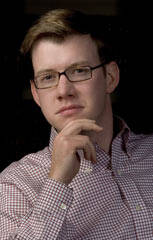Anyone who reads the media pages knows this is a familiar story. Newspapers are in a bad way. Revenues are down sharply because of rising paper costs and declining ad revenue. Almost every major newspaper in the country has been forced to reduce staff size.
There are many reasons to lament these developments. As critics have pointed out, who will keep an eye on government and big business if there is no robust and free press? This worries me too, though there is another reason why I’m saddened. Many of my former colleagues are, if not without a job, then unhappy with the ones they have, where they have been repeatedly asked to “do more with less.”
These are intelligent, hard-working men and women who would be dissatisfied in almost any other line of work. And now they must worry whether their job is the next to go. Some of my friends have moved to business journalism, a more stable, and lucrative, field. Others have left journalism altogether, often to teach or go to law school.
The decline of newspapers will have far-reaching effects that we will only gradually comprehend. One area that will almost certainly be diminished is our artistic and literary culture. For generations newspapers served as a farm league of sorts for the publishing and entertainment industries. Scores of playwrights and screenwriters, magazine writers and prize-winning authors got their start at a daily.
A prime example is the television writer David Simon, who was profiled recently in The New Yorker (“Stealing Life,” 10/22). A former police reporter for The Baltimore Sun, Simon is the creative mind behind HBO’s “The Wire,” by far my favorite show on television. He landed a job with The Sun after college and took to the police beat with great zeal. According to a former Sun editor, Simon “saw the cop beat as a whole window onto the sociology of the city.”
While at The Sun, Simon wrote Homicide: A Year on the Killing Streets, a yearlong look at the Baltimore homicide unit that became the basis for an award-winning drama on NBC. Though he enjoyed success in television, Simon kept his job at the paper and might have stayed for the rest of his career if the paper hadn’t been sold to Times Mirror, a Los Angeles-based newspaper chain. In the early 1990s The Sun’s top editors were replaced with a group from The Philadelphia Inquirer, men Simon loathed so much he named a particularly odious character on “The Wire” after one of them. He left the paper in 1995.
Simon’s genius is that he has adapted his reporting skills to serial television. When people ask, I’m hard pressed to say what “The Wire” is about. On one level, it’s a police drama, but it transcends that tired genre in fresh and surprising ways. It is really about Baltimore, a drug- and violence-addled city that has failed to undergo the urban renaissance of New York or Provi-dence, R.I. Over the course of four seasons, “The Wire” has taken a look at four different parts of Baltimore life: the drug trade, union life on the docks, city hall and the public school system. In its portrayal of public institutions and inner-city African-American culture, “The Wire” is unrivaled.
The show, of course, is fictional, but it is heavily drawn from real life. The show’s writers take pains to simulate the distinctive dialect of inner-city Baltimore, and many characters are based on real figures. The city’s young white mayor, for example, is partially inspired by the former city mayor—and current Maryland governor—Martin O’Malley. At a time when few newspapers are able to mount this kind of sustained look at urban culture, Simon has found a way to do so using HBO’s budget.
The fifth and final season of “The Wire” starts in January, and Simon has chosen to focus on the people who tell the stories in Baltimore, namely journalists. It seems fitting that in its final act, “The Wire” will examine the profession that served as midwife to the show’s own creation. I can’t wait to watch. I also wonder: Without a thriving newspaper industry, where will the next David Simon come from?








